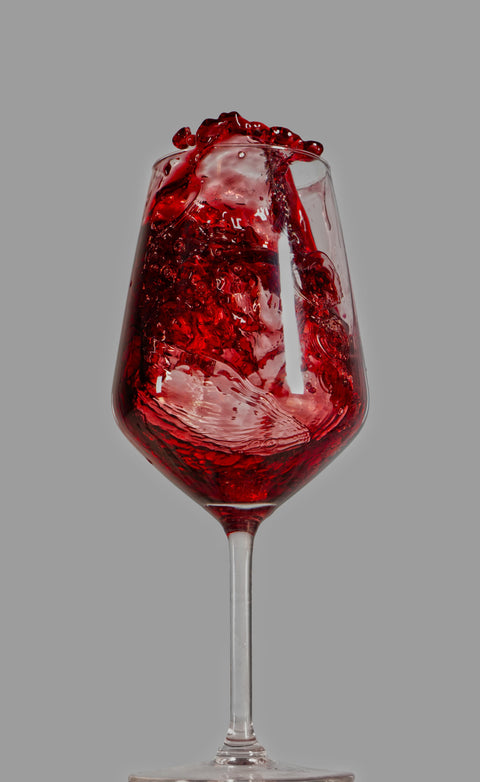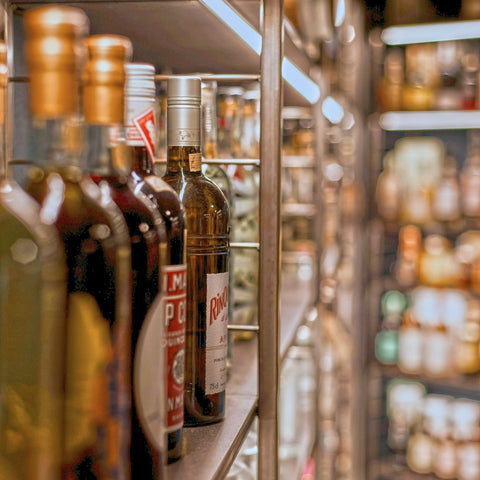When most people think about blending in wine, they think grapes. A bottle is either a single varietal, or a mix of different ones—right?
That’s true. Grape blending is a classic and effective way to build complexity and balance in a wine. Some of the world’s most iconic wines are blends: Champagne (Pinot Noir, Chardonnay, Pinot Meunier), the Southern Rhône’s GSM (Grenache, Syrah, Mourvèdre), Bordeaux (Cabernet Sauvignon, Merlot, Cabernet Franc). Or even white Bordeaux (Sauvignon Blanc and Sémillon).
But blending in wine goes way beyond the grapes. In fact, some experts reckon 99% of all wine is blended in some way before bottling.
What else gets blended in wine?
Pretty much everything that happens during the winemaking process has the potential to become a blending component. This gives the winemakers tools that can be used across multiple dimensions - not just varietals.
A bit like a chef creating a dish…the base ingredients are important, but so are the cooking methods, how the ingredients are prepared, and the level of seasoning.
Here are just a few of the blending components winemakers might play with:
-
Vineyards: Grapes from different plots may be vinified separately and blended later to balance acidity, ripeness, or aromas.
-
Vintages: Especially in Champagne, different harvests are blended to maintain a consistent house style.
-
Maturation: Wines aged in different vessels (e.g. oak vs. stainless steel) can be blended to introduce subtle textures and flavour layers.
-
Techniques: Different yeasts, fermentation temperatures, or processes like carbonic maceration and skin contact might be used on different batches, then blended to create nuance and depth.
- Press Fractions: Each grape press draws different levels of tannin, acidity and sugar that can be blended as required.
Why does blending matter?
Blending gives winemakers control. It allows them to craft a wine that’s complex, harmonious, and exactly how they want it to taste and feel.
Take Geisha Dragon by Ver Sacrum. A small portion (just 10%) is biologically aged under flor—a yeast layer that develops in the barrel, producing nutty, oxidative notes from the formation of acetaldehyde. Putting just the right amount into the final blend allows the winemaker to make something layered and intriguing, but still fresh and fruit forward.
Texture-wise, blending is crucial too. Neighbouring vineyards can get different levels of sun exposure - sun-drenched plots bring riper grapes with softer tannins, while grapes from cooler areas preserve acidity and freshness. Combining grapes from different areas of a single vineyard can add subtle balance to the structure of the final wine.
The art of blending - consistency and creativity
For many producers, blending is the artform within winemaking. In Champagne, it's all about precision - the big Champagne houses strive to replicate a consistent product each year, despite varying conditions. Most Champagne is non-vintage (blends of multiple harvests), which the winemaker must craft year after year, often using only experience and palate to guide the way.
At the other end of the spectrum, natural and low-intervention winemakers may rely on blending to add balance without compromising their production methods. Without acidification or fining options for example, blending becomes a key tool to create the ideal levels of freshness and texture.
Mixtape by Georgiev & Milkov is a great example, where grapes undergo different treatments to create a multi-layed and harmonious wine. Some see skin contact for extra grip, whilst others are fermented whole to create bright fruit flavours. The final result is a lively mix of flavours and textures.
So… is blending an art or a science?
Honestly? It’s both. And the best producers employ a combined approach.
In our opinion, great winemakers need intuition, imagination, and creativity - but they also need precision. Modern wine labs analyse everything from pH to phenolic content, and even DNA fingerprinting to understand the exact potential of each grape variety. Blending today is as much about data as it is about feel.
Check out three of our favourite wines that use innovative blending techniques…
Exis White Drama
Assyrtiko and Malagousia are fermented separately, then blended before bottling. This gives the winemaker total control over the final balance and expression.
Misto Mare
A field blend of grapes from different plots and altitudes, co-fermented to create something spontaneous and harmonious—a kind of controlled chaos.
Geisha Dragon
10% of the wine is aged under flor yeast, then blended back in, adding subtle complexity to the final wine
Final thoughts
Blending is a complex but essential part of the winemaker's craft. Whether it’s used to create consistency, push boundaries, or strike that perfect balance, it’s one of the most powerful tools for making exceptional wine within natural limits.
At Wildcase, we spend our time hunting down the unexpected - the hidden gems, the underdogs, the bottles with more story than status.
Join the Wildcase Wine Club and let us surprise you every month.
Quality, small-batch wine, delivered.
👉 Explore the Wildcase Wine Club




